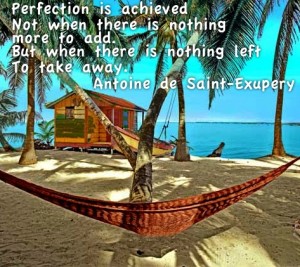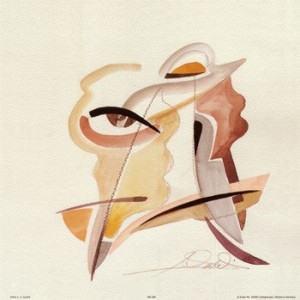 When I was in my 20s I learned of the man who tuned the great and grand pianos at Carnegie Hall. At his scheduled time, he would walk out of the world of Manhattan and into the stillness of this majestic theater, feeling secure in knowing that the entire hall would be empty. And he would sit, like a virtuoso, at the keyboard. In that spaciousness, he would take his time, listening to each string as he tapped on every key. It was an intimate conversation – a gentle touch here, a knowing turn there. Quietly, expertly, ever so focused, in his experience there was no passing of time. So “in the moment”, there was no hurrying and no indulging of distraction. He was so present to the task at hand that time, itself, was merely a concept constructed elsewhere, not even hinted at there in the hall of his patient ear and the pianos he tuned so perfectly.
When I was in my 20s I learned of the man who tuned the great and grand pianos at Carnegie Hall. At his scheduled time, he would walk out of the world of Manhattan and into the stillness of this majestic theater, feeling secure in knowing that the entire hall would be empty. And he would sit, like a virtuoso, at the keyboard. In that spaciousness, he would take his time, listening to each string as he tapped on every key. It was an intimate conversation – a gentle touch here, a knowing turn there. Quietly, expertly, ever so focused, in his experience there was no passing of time. So “in the moment”, there was no hurrying and no indulging of distraction. He was so present to the task at hand that time, itself, was merely a concept constructed elsewhere, not even hinted at there in the hall of his patient ear and the pianos he tuned so perfectly.
The last thing he would do, though, upon finishing a piano and assessing it as being in perfect tune, was to stand next to it, gently and respectfully close it’s lid, and slam his fist down on its lacquered surface as hard as he could, transforming its technical completion to an artistic statement.
 He would hear the strings sigh and ever-so-slightly stand at ease, and a small smile would come on his face, in recognition that too much perfection is, itself, out of balance in the flow of things, and therefore grating to the ears of the listener.
He would hear the strings sigh and ever-so-slightly stand at ease, and a small smile would come on his face, in recognition that too much perfection is, itself, out of balance in the flow of things, and therefore grating to the ears of the listener.
Perfection is like that – a fine goal when recognized as being simply a theoretical guideline which, in actual manifestation, is ofttimes a bit grating to the nerves.
And we are like that, too. We are each like those pianos, having the capacity to be tuned perfectly, but each of us having our own way of pushing our feet against the surface of perfection, like children being obstinate, our obstinance driven by a higher knowing, too deep to understand or recognize.
In childlike blindness, we sometimes indulge the yearning for perfection – driven by some antiquated belief in the salvation of someone’s approval, mythic as that is. Approval seems sweet, and as children we are drawn to it like candy. As adults, we can listen closely to our true nature, and can be like the piano tuner at Carnegie Hall, respectful and responsive to the tension our drives place on the natural beauty that is our unique sound. Oh, what harmonies we sacrifice in striving for perfection and it’s mythic embrace of approval.
Copyright © 2014 Jim Lehrman
 In my work I often get people to shift into an altered state of consciousness that could descriptively be referred to as “practical ecstasy”. Even working on the phone, my work is experiential and sometimes so focused as to get people stoned on their own in-the-moment experience. Practical ecstasy is a state of meta-presence which results from sustaining acute enough attention as to acess information of what is going on between the moments of normal awareness. Here is an exercise that helps people practice this deepening of attention. I recommend you do it with your eyes open. If you’re too distracted, or if the need to blink is frequent, do it with your eyes closed. Also, have a clock handy which is easy for you to see so you can time different part of this.
In my work I often get people to shift into an altered state of consciousness that could descriptively be referred to as “practical ecstasy”. Even working on the phone, my work is experiential and sometimes so focused as to get people stoned on their own in-the-moment experience. Practical ecstasy is a state of meta-presence which results from sustaining acute enough attention as to acess information of what is going on between the moments of normal awareness. Here is an exercise that helps people practice this deepening of attention. I recommend you do it with your eyes open. If you’re too distracted, or if the need to blink is frequent, do it with your eyes closed. Also, have a clock handy which is easy for you to see so you can time different part of this.
Before starting the exercise, take a minute to sit and get relaxed – but not too relaxed. Allow yourself a little time to get mindful. That is, tune in to your in-the-moment experience. Notice your body in your sitting position. Notice your breath and the particular ease and flow of it. Notice if your mind is busy or settled down. Simply notice and allow what happens to be so in your experience.
1. Now, sit quietly, uninterrupted, not speaking, and for one full minute, notice all the movements you make, with the exception of breath-related movements. Your legs, feet, head, arms, torso, hands, fingers, toes, eyes, lips – wherever there is any movement at all in you, simply notice.
2. Now, again, sit quietly, uninterrupted, not speaking, and for another full minute, sit but this time do not allow yourself to move any muscle in your body, again with the exception of breath-related movements. Don’t move your legs, feet, head, arms, torso, hands, fingers, toes, eyes, or lips. During this minute, track (notice) all the movement-related impulses that arise. That is, simply notice every individual desire to move any part of your body without indulging its impulse.
3. After that minute, take a few moments to feel any pent-up energy that is present in your body, then get up and move around a little, just to let that pent-up energy move and dissipate.
4. Now sit down again, and repeat that second step. Except – whenever you notice the desire or impulse to move any part of your body, go ahead and allow yourself to indulge that impulse after noticing it. Mindfully notice it BEFORE indulging it, and stay in your mindful state even as you consciously allow that individual movement to occur. Don’t over-indulge the impulse, though, and keep the movement that you indulge very simple and specific. Then go back to NOT moving so you can again track the next impulse to move, again consciously indulging each impulse after mindfully noticing it.
5. Now take one more minute, sitting quietly as with the previous steps, and allow yourself to move again as you did in the first step. Be in your natural flow, allowing whatever movements that want to happen to be carried out. But this time, see if you can notice each impulse to move BEFORE you make the movements. This is the level of mindfulness you want to maintain in the course of your day.
If you’re not working with me, I recommend you take a week or two to practice this exercise daily to develop more acute attention. Enjoy the ecstasy of being present!
Copyright © 2014 Jim Lehrman
Moment by moment, one event after another crosses in front of our field of experience. Our work is to slow down and observe the world that is being created within ourselves as we organize around the event of this moment.
Who are you in this moment? You are the character who’s experience is enmeshed in the story and state of where your attention happens to be focused. You are not always THIS character. There may be a cast of thousands in there! While we like to think of ourselves as being one stable personality, one or another of these characters, these parts of us, can get triggered simply as a result of where our attention goes. More about it you can read at this post.
Here’s an experiment: focus your attention onto something that you know has some emotional charge for you. Maybe an incident that left you hurt or unresolved, maybe a gift from a friend, a scar on your arm, maybe your dog. As an experiment, see if you can sustain your focus on that thing WHILE watching the unfolding elements of your experience. That is, notice what thoughts arise, what emotions, what you feel in your body, the flow of associations, even how old you feel. Notice the story that gets indulged, and the state that accompanies it. Notice all this AS THE WITNESS rather than as the one having the experience.
To turn this exercise into some practical training, see if you can sustain focus – or even choose some other charged thing to focus on if you want – and slow down enough to “locate” yourself securely as the witness (which simply means to be “separate” enough from your experience to be able to study it), staying there long enough to really experience the difference between being this character and being the “witness”. Then, and this is where you strengthen your skills, shift to being the character who is having the present moment experience, letting go of the witness altogether. Allow yourself to be enmeshed there long enough to have a conscious awareness that, “yes, this is familiar, yes, I know this character”. Then (the most strengthening step) step out again and locate yourself as the witness. Stay present as the witness while allowing this part of you, this character, to stay present as well.
The better you get at being able to step out of your experience and be the witness, and to shift back and forth as described above, the stonger your ability will be to get perspective in situations which in the past may have most “undone” you. There is much you can do with this skill!
Copyright © 2014 Jim Lehrman
 When I was in my 20s I learned of the man who tuned the great and grand pianos at Carnegie Hall. At his scheduled time, he would walk out of the world of Manhattan and into the stillness of this majestic theater, feeling secure in knowing that the entire hall would be empty. And he would sit, like a virtuoso, at the keyboard. In that spaciousness, he would take his time, listening to each string as he tapped on every key. It was an intimate conversation – a gentle touch here, a knowing turn there. Quietly, expertly, ever so focused, in his experience there was no passing of time. So “in the moment”, there was no hurrying and no indulging of distraction. He was so present to the task at hand that time, itself, was merely a concept constructed elsewhere, not even hinted at there in the hall of his patient ear and the pianos he tuned so perfectly.
When I was in my 20s I learned of the man who tuned the great and grand pianos at Carnegie Hall. At his scheduled time, he would walk out of the world of Manhattan and into the stillness of this majestic theater, feeling secure in knowing that the entire hall would be empty. And he would sit, like a virtuoso, at the keyboard. In that spaciousness, he would take his time, listening to each string as he tapped on every key. It was an intimate conversation – a gentle touch here, a knowing turn there. Quietly, expertly, ever so focused, in his experience there was no passing of time. So “in the moment”, there was no hurrying and no indulging of distraction. He was so present to the task at hand that time, itself, was merely a concept constructed elsewhere, not even hinted at there in the hall of his patient ear and the pianos he tuned so perfectly. He would hear the strings sigh and ever-so-slightly stand at ease, and a small smile would come on his face, in recognition that too much perfection is, itself, out of balance in the flow of things, and therefore grating to the ears of the listener.
He would hear the strings sigh and ever-so-slightly stand at ease, and a small smile would come on his face, in recognition that too much perfection is, itself, out of balance in the flow of things, and therefore grating to the ears of the listener.
